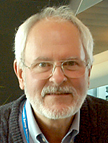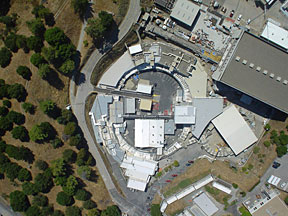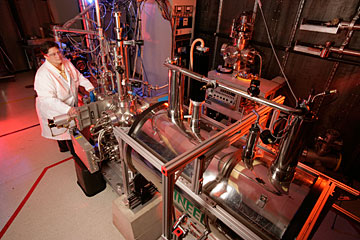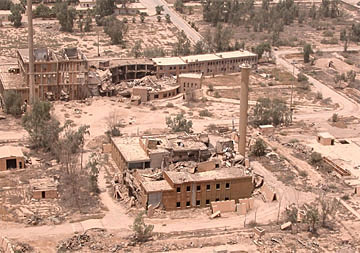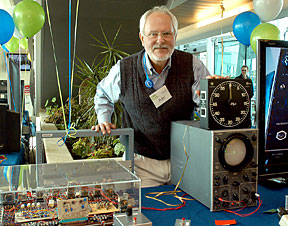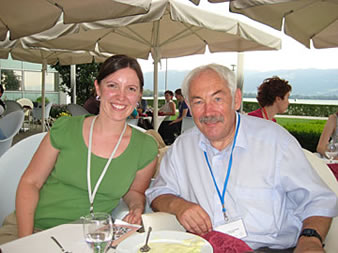| Research
|
On October 24, reporters, community members, and employees gathered at DOE's Brookhaven National Laboratory to play a re-creation of “Tennis for Two,” one of the world’s first video games, invented 50 years ago in Brookhaven’s Instrumentation Division to entertain Lab visitors. At the anniversary event, people played the re-created game for several hours until suddenly something sparked and the tennis court disappeared from the oscilloscope screen. Peter Takacs, the Brookhaven Instrumentation Division physicist who re-created Tennis for Two, consulted the game’s schematic and removed a circuit board from the apparatus. Within 25 minutes, he and his team replaced a burned-out operational amplifier and reinserted the repaired circuit. The tennis court and ball reappeared on screen — much to the delight of the crowd. Though Takacs has become the expert on the electronics behind Tennis for Two, his true expertise is in optical metrology, using light to measure the surface of x-ray mirrors with nanometer precision. Takacs played a leading role in developing the Long Trace Profiler, an instrument now used worldwide to measure the shape of cylindrical mirrors in synchrotron light sources. The profiler was patented in 1989, and customized versions are used by approximately 15 light sources around the world. Now, Takacs is eager to develop a new Long Trace Profiler as Brookhaven prepares for the National Synchrotron Light Source II (NSLS-II). Takacs and the Instrumentation Division will collaborate with Lawrence Berkeley Lab to update calibration standards and instruments for the new facility, which will produce light 10,000 times brighter than Brookhaven’s current NSLS. “Tennis for Two shows how innovative Brookhaven’s Instrumentation Division was fifty years ago,” Takacs explained. “Today, the division develops unique instrumentation and large detectors for scientists at Brookhaven and around the world. We know the equipment inside and out — we build it and we fix it too.”Submitted by DOE's Brookhaven National Laboratory
Connecting scientific generations
Along a multi-year path paved by DOE programs, DOE's Princeton Plasma Physics Laboratory (PPPL) grad student Jessica Baumgaertel recently found herself connecting with other scientific generations at the Lindau Meeting of Nobel Laureates and Students in Lindau, Germany. http://www.lindau-nobel.de/ The third-year Princeton University graduate student in plasma physics was among 542 students from 67 countries sharing meals with and listening to lectures presented by 24 Nobel laureates. Baumgaertel spent one summer at General Atomics as a National Undergraduate Fellowship (NUF) student and two summers at PPPL as a Science Undergraduate Laboratory Internship (SULI) student. Both NUF and SULI are DOE-supported programs for undergraduate students. This summer she completed the practicum associated with the DOE Fusion Energy Sciences Fellowship at the University of Maryland. As an undergraduate, Baumgaertel planned to concentrate on math, but made a discovery through the NUF program: "Physics is cool." Submitted by DOE's Princeton Plasma |
|||||||||||||||||||||||||||||||
|
Check out the joint Fermilab/SLAC publication symmetry.
|
Coalition to promote
|
